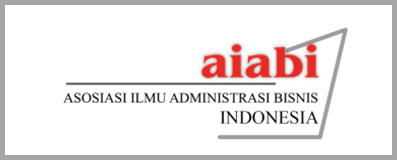Determinants of Pentagon Fraud in Detecting Financial Statement Fraud and Company Value
DOI:
https://doi.org/10.31334/bijak.v18i1.1345Keywords:
Brand Image, Ease of Use, Purchase DecisionAbstract
Purpose of this study was to analyze the determinants of fraud pentagon, namely pressure, opportunity, rationality, capability and arrogance of fraudulent financial statements and value. company. The research sample was 66 manufacturing industrial companies indicated to report financial fraud. Methods of data analysis using regression with panel data. The results showed: Positive pressure on fraudulent financial statements, the more widely used to obtain finance, making outsiders, insiders and financial targets, the greater the fraudulent financial statements; Positive opportunities for financial statement fraud. This shows that there is no factor in the false financial statements; Positive arrogance against fraudulent financial statements. This shows that as arrogance increases, fraudulent financial reports will increase.
The deviation from negative financial statements to financial reports, the greater the company's profits and profits will increase in the long run; Positive pressure on firm value, the more opportunities to get gross profit margin, net cash flow, total managerial ownership, return on assets, firm value will increase; Negative company opportunities for firm value. It shows that nothing bigger and ineffective will improve company performance; Positive rationalization of fraudulent financial statements, so that the greater the ratio to get the amount of accruals to total assets, the greater the firm value; The ability to have a positive relationship with company value. This shows that the determining factor or controlling the running of the company so that the value of the company will increase; Positive attitude towards company value. This shows that increasing arrogance will increase the value of the firm; positive pressure on financial reports, greater amounts of financial information to obtain, costs from outside parties, other parties within and financial targets so that fraudulent financial statements will be greater to increase company value; Positive opportunities for financial reports. This shows that nothing is greater than the job and the ineffectiveness of a good commissioner and fraudulent financial reports will be increasingly bigger to increase the value of the company; A positive rationalization of firm value through fraud in financial statements, so that the greater the total accruals to total assets, the greater the fraudulent financial statements will increase firm value; Financial reporting capabilities. This shows that the greater the value of ownership increases through waning financial statements; Pride against corporate value from fraudulent financial statements. This shows that the more money will increase.
References
ACFE. (2014). Report to The Nations on Occupational Fraud and Abuse: 2014 Global Fraud Study. Texas: Association of Certified Fraud Examiners
Adams, R. and Ferreira, D. 2009. Women in the Boardroom and Their Impact on Governance and Performance. Journal of Financial Economics, 94 (2) 291-309.
Ahmed, Parves and Nanda. 2004. Style Investing: Incorporating PBV in Value Stocks. The Journal of Portfolio Management.
American Institute of Certified Public. 2002. Statement on Auditing Standards (SAS) No. 99: Consideration of Fraud in Financial Statement Audit. New York: AICPA
Association of Certified Fraud Examiner (ACFE). 2010. Report to the Nations on Occupational Fraud and Abuse
Beasley, MS, JV Carcello, DR Hermanson and TL Neal (2010). Fraudulent Financial Reporting 1998-2007. Committee of Sponsoring Organizations of the Treadway Commission (COSO)
Bhagat, S. and B. Bolton (2008), “Corporate governance and firm performance,†Journal of Corporate Finance, Vol 14, pp. 257–273.
Brennan, Niamh M. and McGrath, Mary (2007) Financial Statement Fraud: Incidents, Methods and Motives. Australian Accounting Review, 17 (2) (42) (July): 49- 61
Burgstahler, DC, L. Hail, and C. Leuz. 2006. The importance of reporting incentives: earnings management in European private and public firms. The Accounting Review 81 (5): 983-1016.
Campbell, K. & Minguez-Vera, A., 2008. Gender Diversity in the Boardroom and Firm Financial Performance. Journal of Business Ethics, 83, pp. 435-451.
Carter, David A., BJ Simkins, WG Simpson. 2003, "Corporate Governance, Board Diversity, and Firm Value", The Financial Review, No. 38:33 - 53.
Chtourou, Sonda Marrakchi, Jean Bedard, and Lucie Courteau (2001). Corporate governance and earning management. Working paper, April.
Colgan, P.Mc. (2001). Agency Theory and Corporate Governance: A review of the literature from a UK Perspective. Working Paper.
Cornett M. M, J. Marcuss, Saunders and Tehranian H. (2006). Earnings Management, Corporate Governance, and True Financial Performance
Www.papers.ssrn.com Dechow, DJ Skinner. 2000. “Earnings Management: Reconciling the Views of Accounting Academics, Practitioners, and Regulatorsâ€, Accounting Horizons, American Accounting Association, Vol 14, No.2, June: 235-250
Dechow, PM, RG Sloan, and AP Sweeney (1996), Causes and consequences of earnings manipulation: An analysis of firms subject to enforcement actions by the SEC. Contemporary Accounting Research 13 (1): 1-36
Dorminey, Jack E., et al (2012). The Evolution of Fraud Theory. Issues In Accounting Education, Vol. 27 No. 2 Pp 555-579. American Accounting Association.
Dunn, P. 2004. The Impact of Insider Power on Fraudulent Financial Reporting. Journal Of Management, 30 (3), 397-412.
Geriesh, Loftie. (2003). The Association Between Organizations Culture and Fraudulent Financial Reporting. Nova South Eastern University.
Hassink, Harold, Meuwissen, Roger and Bollen, Laury. 2010. Fraud Detection, Redress and Reporting by Auditors. Managerial Auditing Journal, Vol. 25 No. 9, pp. 861-881.
Healey, Paul M. And James M. Wahlen. (1998). A Review of the Earning Management Kiterature and Its Implications for Standard Setting. Accounting Horizon, 13, 83-105
Intal, Tiina and Linh Thuy Do. 2002. "Recognition Of Revenue And The Auditor's Responsibility for Detecting Financial Statement Fraud". Accounting And Finance Master Thesis, School of Economics and Commercial Law Goteborg University, No. 2002: 53.
Khrisnan, G (2003). Audit Quality and Pricing of Discretionary Accrual. Auditing, 22, 109-126
Koroy, TR nd 2008. "Detection of Financial Report Fraud by External Auditors." National STIE Banjarmasin, p. 22-31.
Lou, Y.-I. And M.-L. Wang: (2009). Fraud Risk Factor of the Tiangle Assessing the Likelihood of Fraudulent Financial Reporting, Journal of Business & Economics Research, 7 (2), 61-77
McNichols, M, and P. Wilson (2000). Evidence of Earnings Management from the provision for Bad Debts. Journal of Accounting Research, 26, 1-31.
Nelson, MW, JA Elliot, and RL Tarpley. 2000. "Where do Companies Attempt Earnings Management, and When Do Auditors Prevent It?" Web: http: //www.latrobefinancialmanagement.com (accessed on 20 November 2013)
Nguyen, Khanh. (2008). "Financial Statement Fraud: Motives, Methods, Cases and Detection", USA: Dissertation.com
Peasnell, KV, PV Pope and S. Young. 2000. Detecting Earning Management Using Cross Sectional Abnormal Accruals Model, Accounting and Business Research, Vol. 30, No. 4: 313-326
Rezaee, X. (2007). Corporate Governance Post Sarbanes-Oxley. Regulation, Requirements and Integrated Process. New York: John Wiley & Sons, Inc.
Rezaee, Z. (2010). Financial Statement Fraud: Prevention and Detection. New York: John Wiley & Sons, Inc., 2nd edition
Rudewicz, Frank (2011). The Fraud Diamond Use of Investigative to Identify The "Capability Element of Fraud". CTTMA Newsletter, Volume IV, Issue 1, February
SAS. (2002). Consideration of Fraud in The Financial Statements Audit. Statement on Auditing Standards No 82
Skousen, CJ, & Twedt, BJ (2009). Fraud Score Analysis in Emerging Market. Cross Cultural Management: An International Journal, 16 (3), pp. 301- 316
Skousen, C., K. Smith, and C. Wright. (2008). Detecting and Predicting Financial Statement Fraud: The effectiveness of the fraud triangle and SAS No. 99. Working Paper. Utah State University, University of Kansas, and Oklahoma State University.
Skousen, JC, Wright, JC, Smith Kevin, R. 2009. Detecting and Predicting Financial
Statement Fraud: The Effectiveness of The Fraud Triangle and SAS No. 99. Advances in Financial Economics, Vol. 13.
Spathis, Charalambos T .. 2002. Detecting False Financial Statements Using Published Data: Some Evidence from Greece. Managerial Auditing Journal 17/4
Troy, Carmelia Janene (2003). The Devil Made Me Do It. Managerial and Strategic Factors Leading to Accounting Fraud. (Doctoral dissertation, University of Maryland)
Turner, JL, TJ Mock, RP Sripastava. 2003. "An Analysis of the Fraud Triangle." The University of Memphis, University of Southern California, University of Kansas.
Vermeer, T. (2003). The impact of SAS No. 82 on an auditor's tolerance of earning management. Journal of Forensic Accounting. 5: 21-34
Wolfe, David T. and Dana R. Hermanson. (2004). The fraud Diamond: Considering the Four Elements of Fraud. http:www.nysscpa.org/cpajournal/2004/1204/essential/
Downloads
Published
Issue
Section
License

This work is licensed under a Creative Commons Attribution-ShareAlike 4.0 International License
Please find the rights and licenses in Majalah Ilmiah Bijak By submitting the article/manuscript of the article, the author(s) agree with this policy. No specific document sign-off is required.
- License
The commercial use of the article will be governed by the Creative Commons Attribution license as currently displayed on Creative Commons Attribution-ShareAlike 4.0 International License.
2. Author(s)' Warranties
The author warrants that the article is original, written by stated author(s), has not been published before, contains no unlawful statements, does not infringe the rights of others, is subject to copyright that is vested exclusively in the author and free of any third party rights, and that any necessary written permissions to quote from other sources have been obtained by the author(s).
3. User Rights
Majalah Ilmiah Bijak spirit is to disseminate articles published are as free as possible. Under the Creative Commons license, Majalah Ilmiah Bijak permits users to copy, distribute, display, and perform the work for non-commercial purposes only. Users will also need to attribute authors and Majalah Ilmiah Bijak on distributing works in the journal and other media of publications.
4. Co-Authorship
If the article was jointly prepared by more than one author, any authors submitting the manuscript warrants that he/she has been authorized by all co-authors to be agreed on this copyright and license notice (agreement) on their behalf, and agrees to inform his/her co-authors of the terms of this policy. Jurnal Bijak will not be held liable for anything that may arise due to the author(s) internal dispute. Majalah Ilmiah Bijak will only communicate with the corresponding author.
5. Miscellaneous
Majalah Ilmiah Bijak will publish the article (or have it published) in the journal if the article’s editorial process is successfully completed. Jurnal Bijak editors may modify the article to a style of punctuation, spelling, capitalization, referencing and usage that deems appropriate. The author acknowledges that the article may be published so that it will be publicly accessible and such access will be free of charge for the readers as mentioned in point 3.
Every accepted manuscript should be accompanied by "Copyright Transfer Agreement"prior to the article publication.





1.png)




